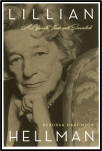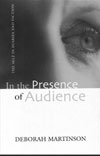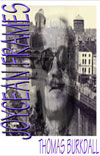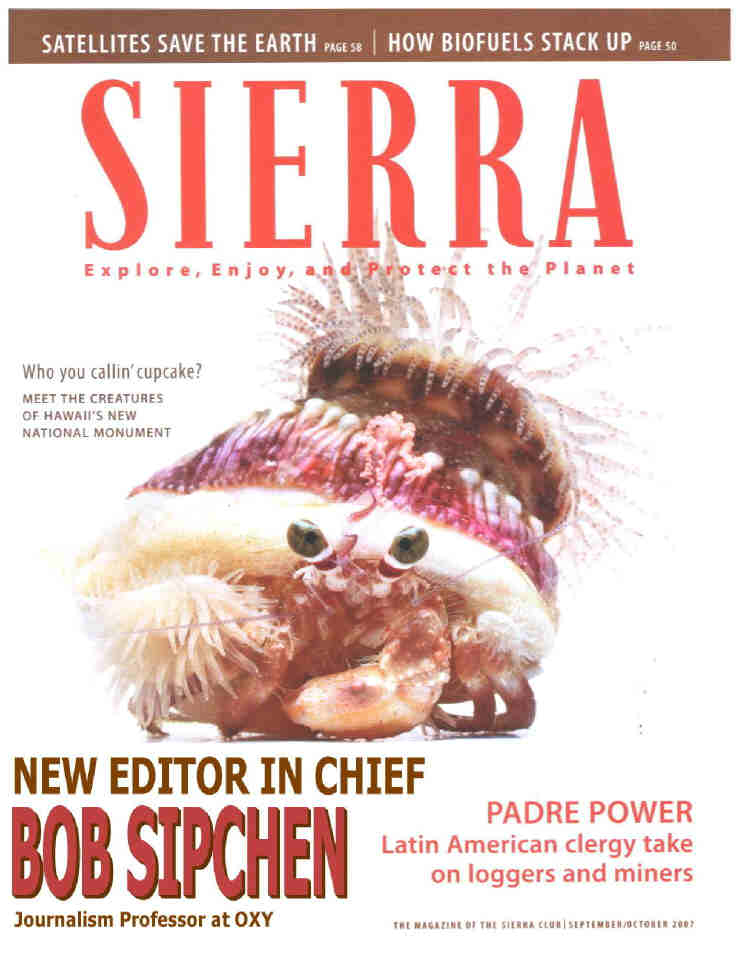A listing of faculty books and articles
Lillian Hellman: A Life with Foxes and Scoundrels
by Deborah Martinson
Counterpoint, 2005
The first biography of Lillian Hellman—the notorious literary star of Broadway and Hollywood—written with the full cooperation of her executors and her most intimate circle.
Few literary celebrities have lived with more abandon and under a brighter spotlight than Lillian Hellman. Yet even fewer have been doubted as absolutely as Hellman, famously denounced by rival Mary McCarthy as a writer form whom “every word was a lie, including ‘and’ and ‘the.’" The details of Hellman’s life have been hotly contested for decades. She was the author of such Broadway hits as The Children’s Hour and The Little Foxes; a Hollywood screenplay writer until she was blacklisted; a writer of best-selling memoirs such as An Unfinished Woman and Pentimento; and the volatile companion of writer Dashiell Hammett, foreign service officer John Melby, and a myriad of other high-profile men. Hellman refused to cooperate with biographers-most notably William Wright-and, up until her death, ordered those close to her to do the same.
Now, in this compelling biography Deborah Martinson moves beyond the myths that drift around Hellman and finds the sassy, outrageous woman committed to writing, to politics, and to having her say. Martinson’s exhaustive research-through interviews, archives, and recently declassified CIA files-and her unprecedented access to Hellman’s confidantes paints the most complete and surprisingly admiring portrait of Hellman that we’ve ever had.
In the Presence of Audience: Diaries, Lives, Fiction.
by Deborah Martinson
Columbus: Ohio State University Press, 2003
“In the Presence of Audience is a substantial contribution to the current interest in non-fiction writing, whether that be termed life writing or autobiography or diary. Martinson goes beyond the usual—in her claims, and in her juxtapositions of diary with fiction in each author’s case. Her reading of Virginia Woolf—the longest in the book—is superb." —Linda Wagner-Martin, University of North Carolina, Chapel Hill
“This solid study is likely to appeal to both an academic audience and members of the wider community with an interest in women’s diaries or women’s writing generally." —Lee Edwards, University of Massachusetts, Amherst
“The strength of In the Presence of Audience lies not only in Martinson’s original and provocative thesis but also in her readings of diaries and diary relationships."
Joycean Frames
by Thomas Burkdall
New York and London: Routledge, 2001
Employing concepts from film theory, this much-needed study explores in-depth the "cinematic" qualities of James Joyce's fiction, from Dubliners to Finnegans Wake. Thomas Burkdall documents Joyce's biographical associations with the movies, explains the relationship of the modernist texts to the art and criticism of film, and examines the relationship of the reader to the text. Employing concepts from film theory, this study explores the "cinematic" qualities of James Joyce's fiction, from Dubliners to Finnegans Wake. Although critics have often noted Joyce's affinities with the cinema, previous studies do not discuss the wide range of issues involved. Not only does this book document Joyce's biographical associations with the movies, it also explains the relationship of his modernist texts to the art and criticism of film and examines the relationship of the reader to the text. As Joyce's canon evolves, different aspects of film theory and practice bear relevance to his work. André Bazin's commentary on Italian neo-realist cinema and Walther Ruttmann's 1927 avant-garde film, Berlin, shed light on the realistic aspects of Dubliners and Ulysses, while Sergei Eisenstein's essays inform a discussion of montage and the deformation of images, qualities which emerge in A Portrait, only to blossom fully in Ulysses and Finnegans Wake. The fantastic elements of the "Circe" episode of Ulysses and aspects of Finnegans Wake are further analyzed using terms from Vachel Lindsay's early film criticism and compared to the French trick films of Georges Méliès. In a final chapter, recent film theory provides a lens for examining Joyce's texts; applying the feminist psychoanalytic concepts of Laura Mulvey and Mary Ann Doane offers insight into the manipulation of the gaze in the "Nausicaa" episode, reinforcing the patriarchal order. Such investigation further raises the issues of how the reader identifies with both the characters and the text. This book's critical approach not only considers Joyce and cinema in an interdisciplinary manner, it also has important implications for further research into film and its effects on and relations to literary Modernism.
Engineering Womanhood: The Politics of Rejuvenation in Gertrude Atherton’s Black Oxen
by Julie Prebel
Duke University Press, 2004
We cannot . . . perform the comic opera bouffe of transmuting an old hag into a giddy young damsel. . . But, under certain conditions, we can stretch the span of . . . usefulness, and enable the patient to recapture the raptures, if not the roses of youth.—Eugen Steinach
In her autobiography, Gertrude Atherton pronounces her novel Black Oxen (1923) a ‘‘miracle [that] gushed out like a geyser that had been ‘capped’ down in the cellars of my mind, battling for release.’’ According to Atherton, she finished this novel in record time, typing at a speed she ‘‘had never commanded before.’’ The geyser propelling the completion of what would become one of Atherton’s most successful and controversial books was nothing less than a ‘‘modern scientific fountain of youth’’—the result, she claims, of a course of anti-aging treatment that gave her ‘‘renewed mental vitality and neural energy." In Atherton’s case, this therapy consisted of eight sessions of X-rays directed at the ovaries. Known as rejuvenation (or reactivation, the term Atherton preferred), the treatment was promoted in the 1920s by scientists, physicians—and Atherton—as a means for restoring sexual and mental potency.
Rejuvenation therapy was big news in the 1920s when Viennese physiologist and biologist Eugen Steinach published the results of his early vasoligature operations. First performed on rats in 1910 and later on humans in 1918, the procedure tied off the sperm ducts, which purportedly had the effect of reversing the internal and external signs of aging.
The Political Shape of Kairos
by Paul Casey
Enculturation 5.2 (2004)
Preface
I think it entirely appropriate that the “Political Shape of Kairos" makes its way into a special double issue of Enculturation devoted to questions of disciplinarity. Writers in this issue, for instance, are asked to be aware of a now-time where both Rhetoric and Composition are marked in different ways by some sense of crisis. In a passage from the Dissoi Logoi attributed to the Sophist Hippias, Mario Untersteiner reads kairos as “unprecedented time." A useful interpretation might include the idea that new imaginings are possible for momentary reconciliations between Rhetoric and Composition. Carolyn Eriksen Hill’s reading of kairos underscores the potential for transformation in such times: “What we—our students and we—today tend to experience as binary oppositions, the static, intractable polarized thinking that shows up in our lives and in our discourse, was for Pythagoras a matter of those forces expressing themselves kairotically and energetically, shaping and changing our experience of time, and themselves being transformed by it." We might add Rhetoric/Composition to the list of binaries that have interacted kairotically at times, producing momentary reconciliations between the two disciplines. These interactions have been a great boon to composition. Current traditional rhetoric, process pedagogy, and writing across the curriculum, all borrow important features from classical and modern rhetorical theory.
Quite possibly this double issue of Enculturation is a self-conscious act of kairos. Eric Charles White notes in his book Kaironomia that for Gorgias, “kairos stands for a radical principle of occasionality which implies a conception of the production of meaning in language as a process of continuous adjustment to and creation of the present occasion." The occasion created for this issue begins with a question: “Where’s the Rhetoric?" In the field of Rhetoric, kairos might form the core of maintaining, over and over, its very existence against those for whom the study of intention is inherently dangerous to their positions of power. Much in the way Derrida wants us to maintain the “specters of Marx," that is, the ability of Marx’s ideas to destabilize and haunt capital, a kairos for Rhetoric asserts itself as a way of revealing design and desire. Maintaining Rhetoric as an act of criticism is important for its continued departmental viability, yet rhetoric happens, regardless of the self-conscious act. Roland Barthes may have provided a semiotics of culture, to name one example, but Rhetoric seeks to unpack the shifting desires of those sign systems designed to move people in different ways.
What the following article offers is a reading of Derrida’s Specters of Marx as an example of kairos. His intention is to re-invent and even rescue Marx from both the totalizing effects of Marxist scholarship and the death sentence of global capitalism. I hope that readers might be encouraged to take from this article not so much a plan for enacting kairos as a new awareness that comes from recognizing its transformative power.
For a complete article: Casey, Paul. "The Political Shape of Kairos." Enculturation 5.2 (2004): http://enculturation.gmu.edu/5_2/casey.html
Sierra Magazine
Bob Sipchen, Editor
See: Sierra Magazine




